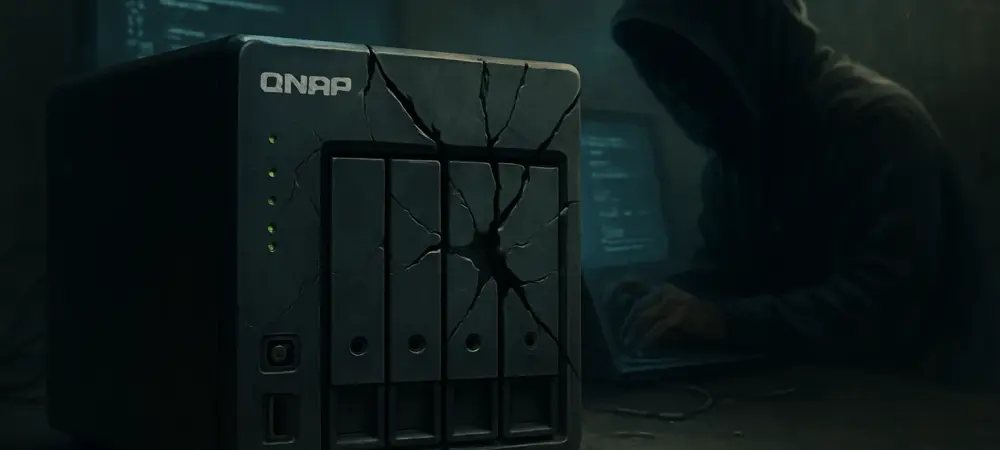I’m thrilled to sit down with Dominic Jainy, a seasoned IT professional whose expertise in cybersecurity, artificial intelligence, and emerging technologies offers a unique perspective on the evolving landscape of network security. Today, we’re diving into a critical topic: the recent exploitation of zero-day vulnerabilities in QNAP network-attached storage (NAS) devices at Pwn2Own Ireland 2025. In this conversation, we’ll explore the nature of these flaws, how they were exploited, the impact on users, and the steps taken to secure these widely used systems. Dominic will also share insights on protecting NAS devices in an increasingly threat-heavy environment.
Can you walk us through what unfolded at Pwn2Own Ireland 2025 with QNAP devices and why it caught so much attention?
Absolutely. Pwn2Own Ireland 2025, held in Cork from October 20-22, was a significant event in the cybersecurity world, and QNAP NAS devices became a focal point. Security researchers from teams like Summoning Team, DEVCORE, Team DDOS, and even a CyCraft intern successfully exploited seven zero-day vulnerabilities in these devices. The goal was to demonstrate full system takeover, bypassing authentication and gaining control over the NAS systems. What made this stand out was not just the number of flaws but the critical nature of the exploits, which could allow attackers to run arbitrary code or escalate privileges, potentially compromising sensitive data stored on these devices.
What can you tell us about the nature of these seven zero-day vulnerabilities in QNAP systems?
These vulnerabilities, identified with codes like CVE-2025-62847 through CVE-2025-62849 and associated ZDI entries, are serious flaws in QNAP’s operating systems, specifically targeting QTS 5.2.x and QuTS hero versions h5.2.x and h5.3.x. They include issues that enable remote code execution (RCE) and privilege escalation. Essentially, they could allow an attacker to run malicious code on the device remotely or gain higher access levels than intended. Some of these flaws also affect integrated apps like HBS 3 Hybrid Backup Sync and even Malware Remover, opening doors to unauthorized access or command injection.
How did the researchers manage to exploit these vulnerabilities during the event?
The researchers leveraged specific weaknesses in the QNAP systems, such as improper input validation leading to buffer overflows and use-after-free errors in components like CGI handlers. For instance, they targeted stack-based overflows in the quick.cgi module to execute shell commands, even on uninitialized devices. They then chained these flaws with privilege escalation techniques to gain full control, extending their reach to initialized systems. This kind of chaining mirrors past QNAP issues but evolved into zero-click RCE in modern firmware, meaning no user interaction was needed for the attack to succeed.
What was the broader impact of these exploits as demonstrated at Pwn2Own?
The impact was quite alarming because these exploits weren’t limited to specific conditions—they could potentially affect a wide range of QNAP NAS devices running the vulnerable firmware versions. The severity was underscored by the prize money awarded in the NAS category, with bounties exceeding $150,000 out of a total of nearly $800,000 for all hacks at the event. This hefty payout reflects how critical these flaws are, as they could lead to data theft or denial-of-service attacks, especially in environments where NAS devices store sensitive information.
How did QNAP respond to these vulnerabilities being exposed at the event?
QNAP acted swiftly after the Pwn2Own demonstrations, releasing firmware updates on October 24, 2025, just days after the event. These updates targeted the affected operating system branches with fixes for memory corruption issues and authentication bypass vectors. They included hardened input sanitization and kernel patches to prevent overflow exploits. It’s a strong response, showing their commitment to addressing zero-days before they’re exploited in the wild, though users must take action to apply these patches.
Can you dive into the specifics of the affected QNAP systems and what users need to do to secure them?
Certainly. For QTS 5.2.x and QuTS hero h5.2.x, users need to upgrade to version 5.2.7.3297 build 20251024 or later. For QuTS hero h5.3.x, the required version is 5.3.1.3292 build 20251024 or later. These updates address core OS flaws and even specific risks in hybrid storage setups using ZFS integration, which could amplify RCE threats. Users can apply these updates through the Control Panel under System > Firmware Update with Live Update enabled, or manually download them from QNAP’s Download Center if they’re in an offline environment.
Beyond firmware updates, what other measures does QNAP recommend to safeguard NAS devices?
QNAP emphasizes a layered approach to security. They advise immediate password rotation to prevent unauthorized access, especially post-exploit scenarios. Segmenting NAS traffic using VLANs is another key recommendation to limit lateral movement if a device is compromised. They also suggest auditing logs for suspicious CGI requests and using tools like intrusion detection systems for ongoing monitoring. These steps are crucial because even patched systems can face risks from misconfigurations or other attack vectors.
Looking ahead, what is your forecast for the future of NAS security given the increasing focus on these devices as attack targets?
I think NAS security will remain a hot topic as these devices become central to both personal and enterprise data storage. With the rise of remote work and cloud integration, attackers are increasingly targeting NAS systems as entry points for broader network compromise or ransomware deployment. We’ll likely see more sophisticated exploits, especially zero-days, as attackers refine their techniques. On the flip side, I expect manufacturers like QNAP to invest heavily in proactive measures—think enhanced bug bounty programs and AI-driven threat detection baked into firmware. For users, staying ahead will mean adopting a security-first mindset, prioritizing updates, and embracing best practices like least privilege access and regular audits.

